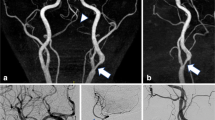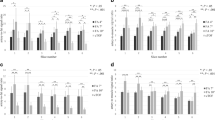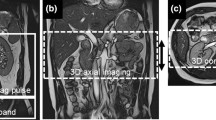Abstract
This study aimed to assess the accuracy of time-of-flight magnetic resonance angiography, computed tomography, and conventional angiography in depicting the actual length of the blood vessels. Three-dimensional time-of-flight magnetic resonance angiography and computed tomography angiography were performed using a flow phantom model that was 2.11 mm in diameter and had a total area of 0.26 cm2. After this, volume rendering technique and the maximum intensity projection method as well as two-dimensional digital subtraction angiography and three-dimensional rotational angiography based on conventional angiography were conducted. For three-dimensional time-of-flight magnetic resonance angiography, 8 channel sensitivity encoding (SENSE) head coil for the 3.0 Tesla equipment was used. Fluid was added to the normal saline solution at various rates, such as 11.4, 20.0, 31.4, 40.0, 51.5, 60.0, 71.5, 80.1, 91.5, and 100.1 cm/s using an automatic contrast media injector. Each image was thoroughly examined. After reconstructing the image using the maximum intensity projection method, the length of the conduit in the center of the coronal plane was measured 30 times. After performing computed tomography angiography with the 64-channel CT scanner and 16-channel CT scanner, the images were sent to TeraRecon. Then, the length of the conduit in the center of the coronal plane of each image was measured 30 times after reconstructing the images using volume rendering and maximum intensity projection techniques. For conventional angiography, three-dimensional rotational angiography and two-dimensional digital subtraction angiography were used. Images obtained by three-dimensional rotational angiography were reconstructed and enhanced by 33, 50, and 100 % in the 128 Matrix and the 256 Matrix, respectively on the Xtra Vision workstation. The maximum intensity projection was used for the reconstruction, and the length of the conduit was measured 30 times in the center of the coronal plane of each image. Measurements using the two-dimensional digital subtraction angiography were obtained 30 times in the center of the image. As a result, the lumen length measured by three-dimensional enhanced flow MR angiography images was a minimum of 2.51 ± 0.12 mm when the fluid velocity was 40 cm/s. The images obtained by computed tomography angiography were larger than the actual images obtained by using the test equipment and the reconstruction method. Among the reconstruction methods of three-dimensional rotational angiography, the lumen length in the image reconstructed by 100 % in the 256 matrix was the smallest; 2.76 ± 0.009 mm. In the 128 matrix, as the scope of reconstruction was widened, the length of the vessel was increased by 0.710 units. In the 256 matrix, as the scope of reconstruction was widened, the length of the vessel was decreased by 0.972 units. In two-dimensional digital subtraction angiography, the lumen length in the image was 2.22 ± 0.095 mm. Although this image was magnified similar to the image reconstructed by 100 % in the 256 matrix of three-dimensional rotational angiography (P < 0.05), it was closest to the actual image among the images compared in this study. In conclusion, images obtained by two-dimensional digital subtraction angiography were closer to the actual images compared to the images obtained by other procedures. It can be concluded that vascular images obtained by magnetic resonance angiography, CT angiography, and conventional angiography were larger than the actual images.




Similar content being viewed by others
References
Lee, H. J., Park, O. K., Kang, J. C., Shin, Y. K., Lee, S. L., and Jung, M. S., Changing Pattern of Cerebrovascular Disease in Korea Partially Viewed through Literatures. J. Korean Med. Assoc. 34:75–68, 1991.
Myung, H. J., Lee, S. B., Rho, J. K., Yun, B. W., Lee, W. Y., Kim, M. H., Kim, J. H., Wie, B. A., Chung, C. S., and Kwon, O. S., Current Status of Cerebrovascular Disease in Korea. Korean J. Neurol. 7:179–187, 1989.
Song, I. H., Oh, D. H., Kang, H. S., Cho, C. H., Kim, K. S., Kim, M. S., Song, J. S., and Bae, J. H., Changing Pattern of Stroke During The Recent 10 Years in Korea. Korean J. Med. 43:637–644, 1992.
Lee, B. C., Jeong, S. C., Hwang, S. H., Kim, H. C., Bae, J. C., Ma, H. I., Yu, K. H., and Lee, I. H., Analysis of 1,129 consecutive patients with acute stroke: The Hallym Stroke Registry. Korean J. Stroke 1:21–27, 1999.
Lee, B. H., Guideline for intracranial stenting of symptomatic intracranial artery stenosis: Preliminary report. Neurointervention 2:30–35, 2007.
Korea Health Industry Development Institute, Medical device industry analysis report. Hanhakmunhwa, Seoul, 2013.
Seo, D. H., Kang, H. S., Kim, D. W., Park, S. K., Song, Y., Shin, S. H., Yu, S. H., Kwon, S. E., Na, J. H., Bae, H. J., Oh, C. W., Yu, K. H., Yun, B. W., Lee, B. C., Heo, J. H., Hong, G. S., Hong, S. C., and Park, I. S., Guideline for Unruptured Intracranial Aneurysms. Korean J. Cerebrovasc. Surg. 13:279–290, 2011.
Nejati, M., and Pourghassem, H., Multiresolution image registration in digital x-ray angiography with intensity variation modeling. J. Med. Syst. 38:1–10, 2014.
Chen, S. T., Hung, P. K., Lin, M. S., Huang, C. Y., Chen, C. M., Wang, T. D., and Lee, W. J., DWT-based segmentation method for coronary arteries. J. Med. Syst. 38:1–8, 2014.
Schramm, P., Schellinger, P. D., Klotz, E., Kallenberg, K., Fiebach, J. B., Külkens, S., Heiland, S., Knauth, M., and Sartor, K., Comparison of perfusion computed tomography and computed tomography angiography source images with perfusion-weighted imaging and diffusion-weighted imaging in patients with acute stroke of less than 6 hours’ duration. Stroke 35:1652–1658, 2004.
Egger, J., Kappus, C., Freisleben, B., and Nimsky, C., A medical software system for volumetric analysis of cerebral pathologies in magnetic resonance imaging (MRI) data. J. Med. Syst. 36:2097–2109, 2012.
Daliri, M. R., Automated diagnosis of Alzheimer disease using the scale-invariant feature transforms in magnetic resonance images. J. Med. Syst. 36:995–1000, 2012.
Kim, E. C., Heo, Y. C., Cho, J. H., Lee, H. J., and Lee, H. K., Analysis of Images According to the Fluid Velocity in Time-of-Flight Magnetic Resonance Angiography, and Contrast Enhancement Angiography. J. Magn 19:185–191, 2014.
Han, J. S., Dong, K. R., Chung, W. K., Cho, J. H., Shin, J. W., and Kim, Y. J., Quantitative Analysis of T1 Weighted Images due to Change in TI by Using the Inversion Recovery in 3.0T Brain MRI Examination. J. Magn. 17:158–162, 2012.
Choi, C. G., Lee, D. H., Lee, J. H., Pyun, H. W., Kang, D. W., Kwon, S. U., Kim, J. K., Kim, S. J., and Suh, D. C., Detection of intracranial atherosclerotic steno-occlusive disease with 3D time-of-flight magnetic resonance angiography with sensitivity encoding at 3T. Am. J. Neuroradiol. 28:439–446, 2007.
Heiserman, J. E., Drayer, B. P., Fram, E. K., Keller, P. J., Bird, C. R., Hodak, J. A., and Flom, R. A., Carotid artery stenosis: Clinical efficacy of two-dimensional time-of-flight MR angiography. Radiology 182:761–768, 1992.
Heiserman, J. E., Drayer, B. P., Keller, P. J., and Fram, E. K., Intracranial vascular stenosis and occlusion: Evaluation with three-dimensional time-of-flight MR angiography. Radiology 185:667–673, 1992.
Korogi, Y., Takahashi, M., Nakagawa, T., Mabuchi, N., Watabe, T., Shiokawa, Y., Shiga, H., O’Uchi, T., Miki, H., Horikawa, Y., Fujiwara, S., and Furuse, M., Intracranial vascular stenosis and occlusion: MR angiographic findings. Am. J. Neuroradiol. 18:135–143, 1997.
Bang, O. Y., Stroke guidelines: From past to future. J. Neurocrit. Care 1:S47–S49, 2008.
Beslic, S., MR imaging of aortic coarctation. Radiol. Oncol. 38:5–13, 2004.
Lévy, C., Laissy, J. P., Raveau, V., Amarenco, P., Servois, V., Bousser, M. G., and Tubiana, J. M., Carotid and vertebral dissections: Three-dimensional time-of-flight MR angiography and MR imaging versus conventional angiography. Radiology 190:97–103, 1994.
Korogi, Y., Takahashi, M., Mabuchi, N., Miki, H., Fujiwara, S., Horikawa, Y., Nakagawa, T., O’Uchi, T., Watabe, T., and Shiga, H., Intracranial aneurysms: Diagnostic accuracy of three-dimensional, Fourier transform, time-of-flight MR angiography. Radiology 193:181–186, 1994.
Choi, C. K., Han, M. H., Park, J. H., and Jang, K. H., Flow signal characteristics in 3 dimensional time of flight MR angiography using flow phantom. J. Korean Radiol. Soc 36:729–736, 1997.
Shin, S. H., and Hwang, D. S., Reconstruction of stereo MR angiography optimized to view position and distance using MIP. JKSMRM 16:67–75, 2012.
Fishman, E. K., Ney, D. R., Health, D. G., Corl, F. M., Horton, K. M., and Johnson, P. T., Volume rendering versus maximum intensity projection in CT angiography: What works best, when and why. Radiographics 26:905–922, 2006.
Lee, J., and Chung, T. S., Comparison of non-invasive imaging studies in the evaluation of carotid artery stenosis and occlusion: CT angiography, time-of-flight MR angiography and contrast-enhanced MR angiography. J. Korean Soc. Magn. Reson. Med 15:234–241, 2011.
Tanami, Y., Jinzaki, M., Sato, K., Ueno, S., Yamada, M., and Kuribayashi, S., Circulation 118:S105–S106, 2008.
Funabashi, N., Kobayashi, Y., Perlroth, M., and Rubin, G. D., Coronary artery: Quantitative evaluation of normal diameter determined with electron-beam CT compared with cine coronary angiography-initial experience. Radiology 226:263–271, 2003.
Addis, K. A., Hopper, K. D., Iyriboz, T. A., Liu, Y., Wise, S. W., Kasales, C. J., Blebea, J. S., and Mauger, D. T., CT angiography: In vitro comparison of five reconstruction methods. Am. J. Roentgenol. 177:1171–1176, 2001.
Euclid, S., Computed tomography, Elsevier Science Health Sciencediv, 2008.
Yun, C. H., and Bang, O. Y., MRI techniques for assessing collateral circulation and clinical implications in acute ischemic stroke. J. Neurocrit. Care 6:1–7, 2013.
Lee, S. G., Imaging diagnosis of occlusive cerebrovascular diseases and cerebral. Infarction. Korean J. Med 1:611–619, 2010.
Green, N. E., Chen, S. J., Messenger, J. C., and Carrill, J. D. Interventional cardiology: Percutaneous noncoronary intervention. Springer. 21, 391–403, 2007.
Gupta, R., Grasruck, M., and Suess, C., Ultra-high resolution flat-panel volume CT: Fundamental principles, design architecture, and system characterization. Eur. Radiol. 16:1191–1205, 2006.
Feldkamp, L. A., Davis, L. C., and Kress, J. W., Practical cone-beam algorithm. JOSAA. 1:612–619, 1984.
Acknowledgments
Yeong- Cheol Heo and Hae-Kag Lee equally contributed to this work.
This work was supported in part by the Soonchunhyang university Research Fund
Author information
Authors and Affiliations
Corresponding author
Additional information
This article is part of the Topical Collection on Transactional Processing Systems
Rights and permissions
About this article
Cite this article
Heo, YC., Lee, HK., Yang, HJ. et al. Analysis of Enlarged Images Using Time-of-Flight Magnetic Resonance Angiography, Computed Tomography, and Conventional Angiography. J Med Syst 38, 146 (2014). https://doi.org/10.1007/s10916-014-0146-6
Received:
Accepted:
Published:
DOI: https://doi.org/10.1007/s10916-014-0146-6




